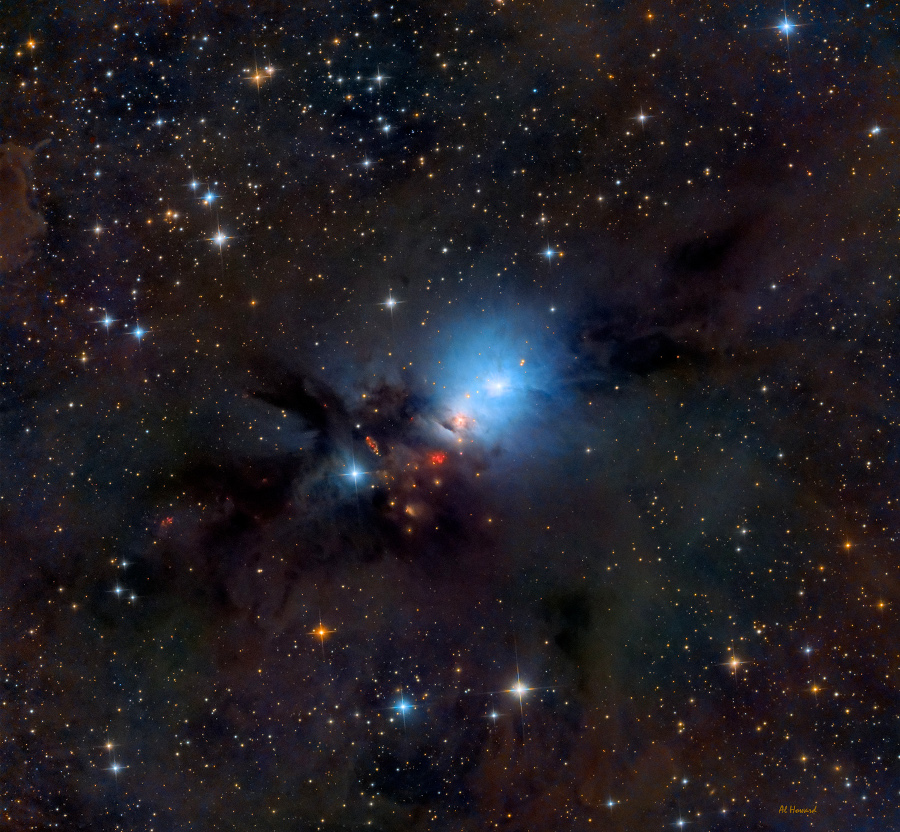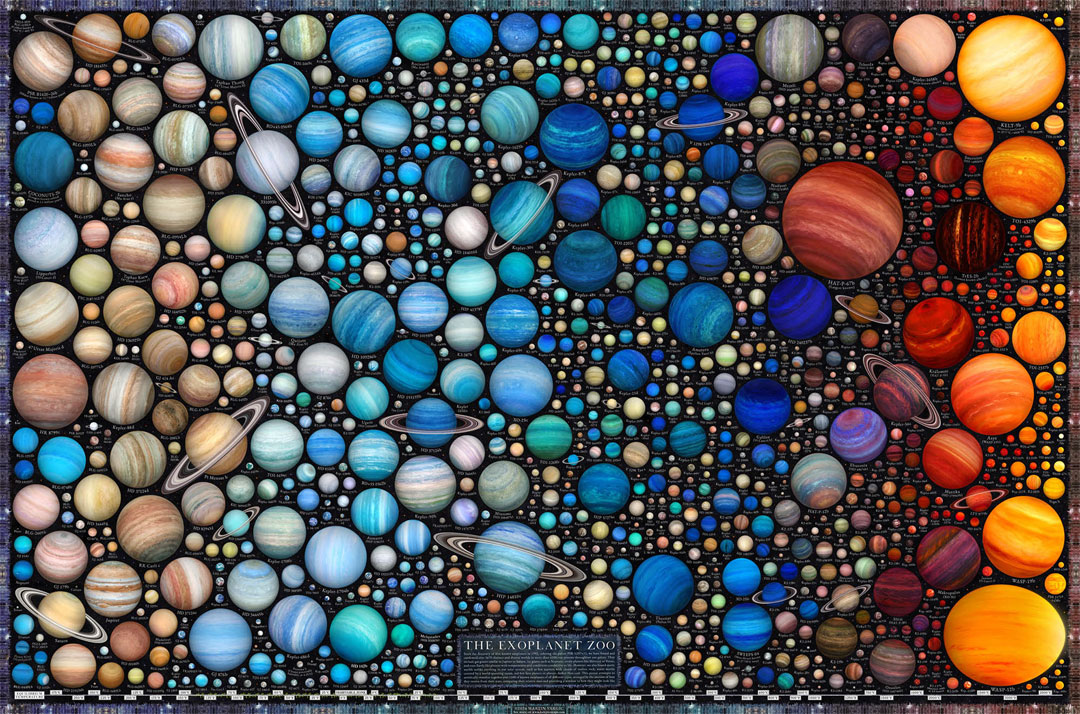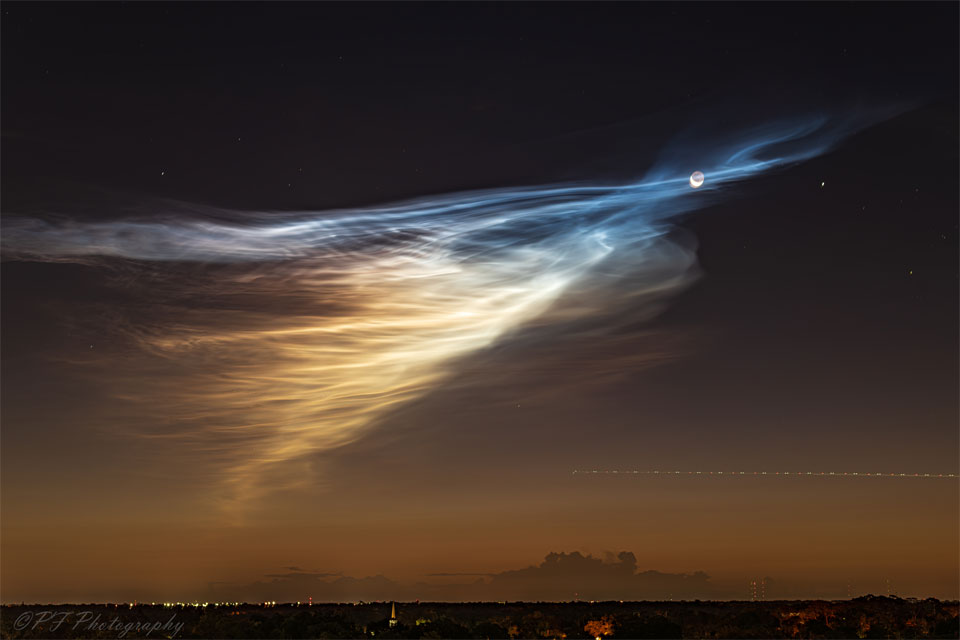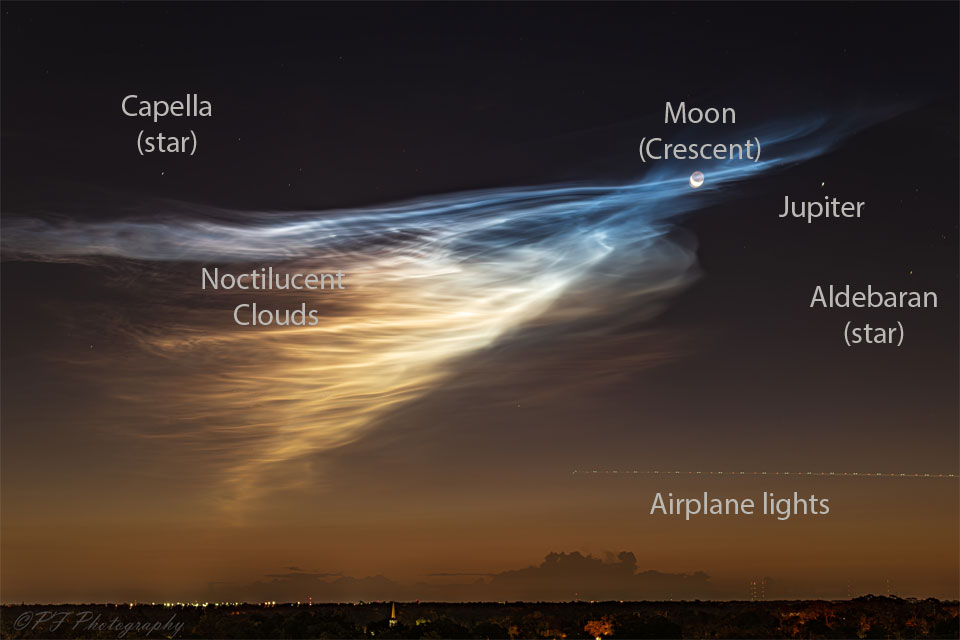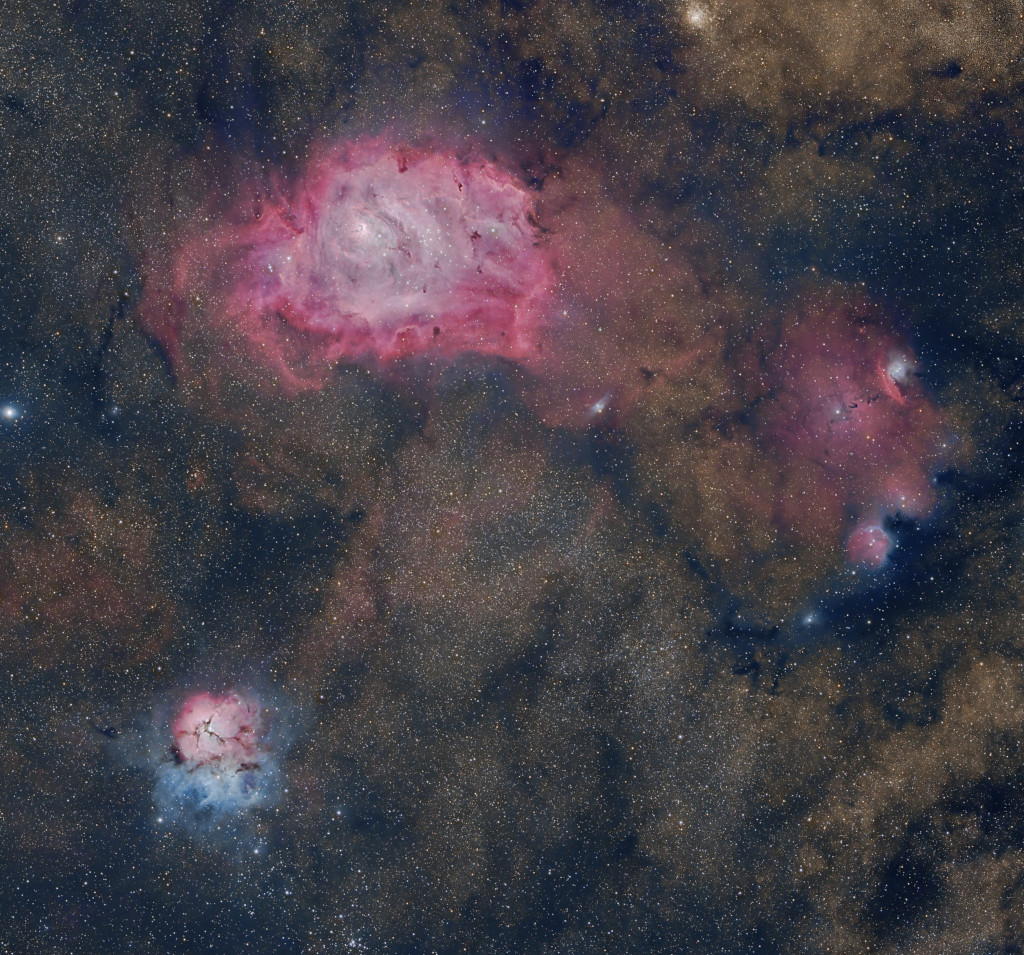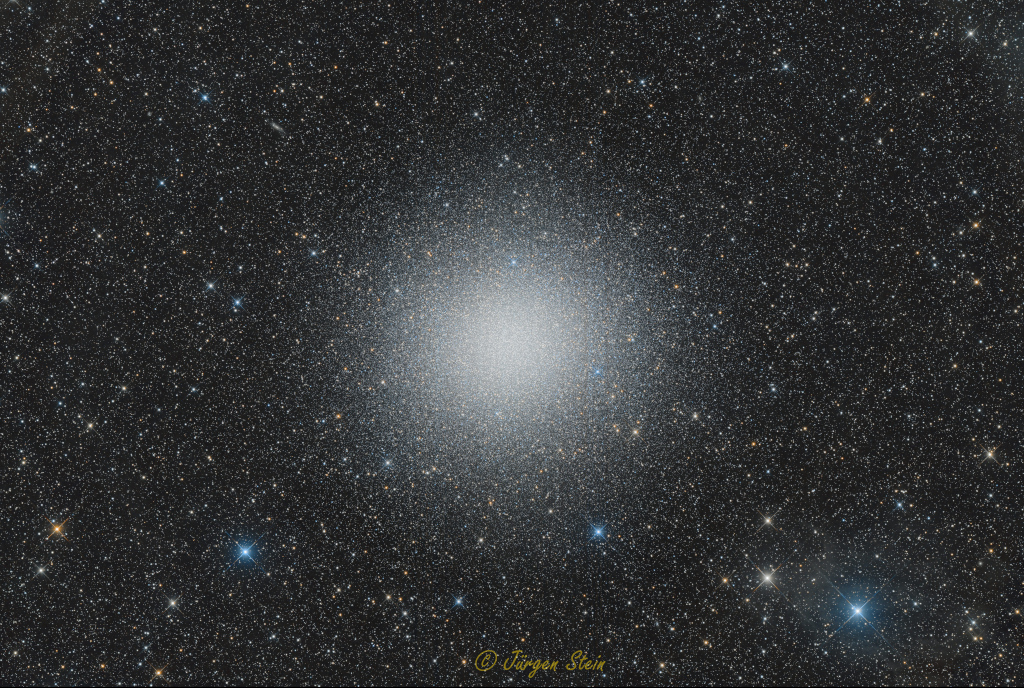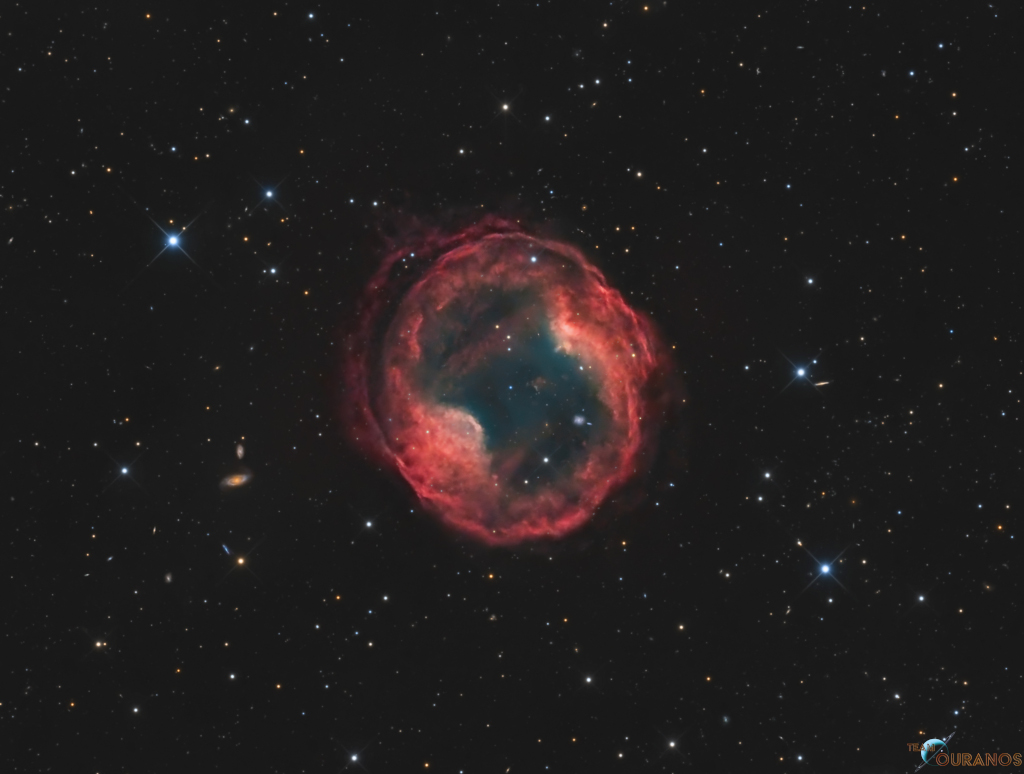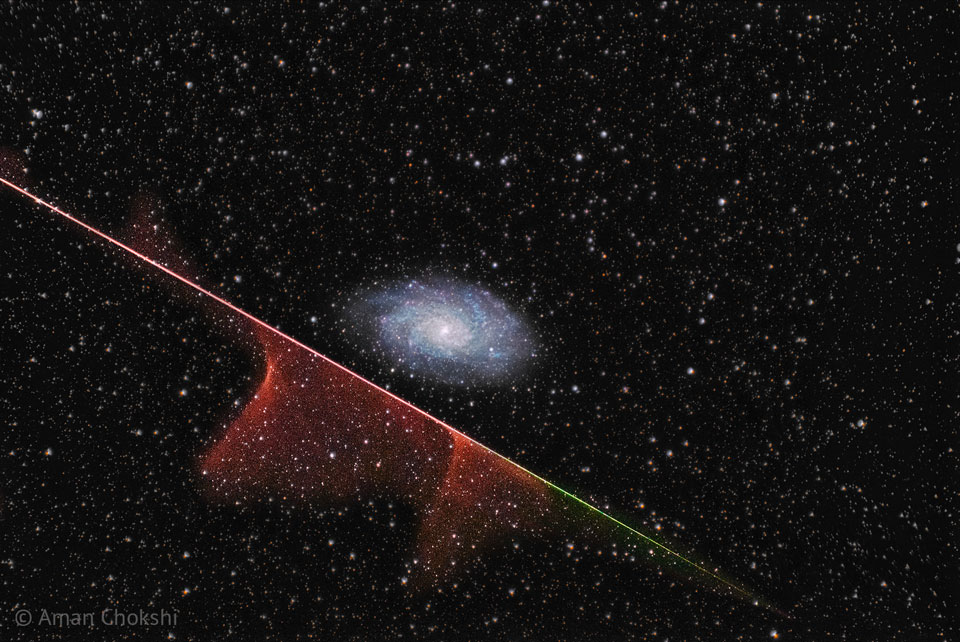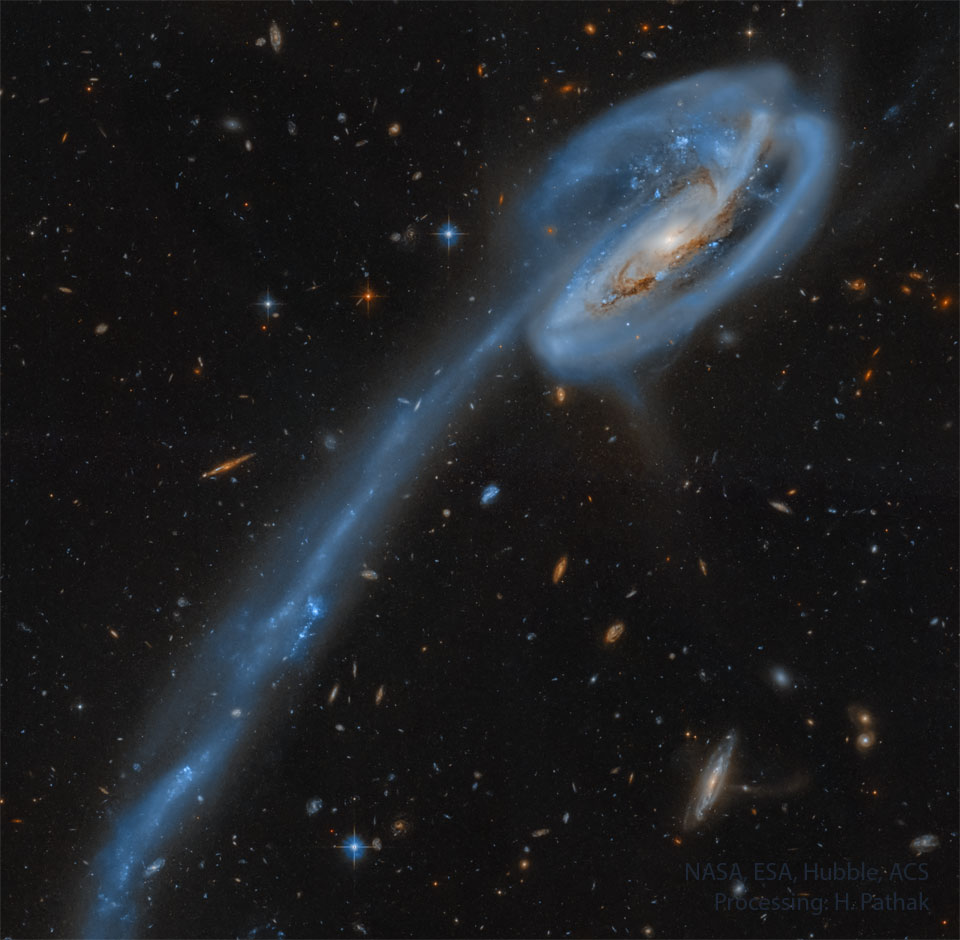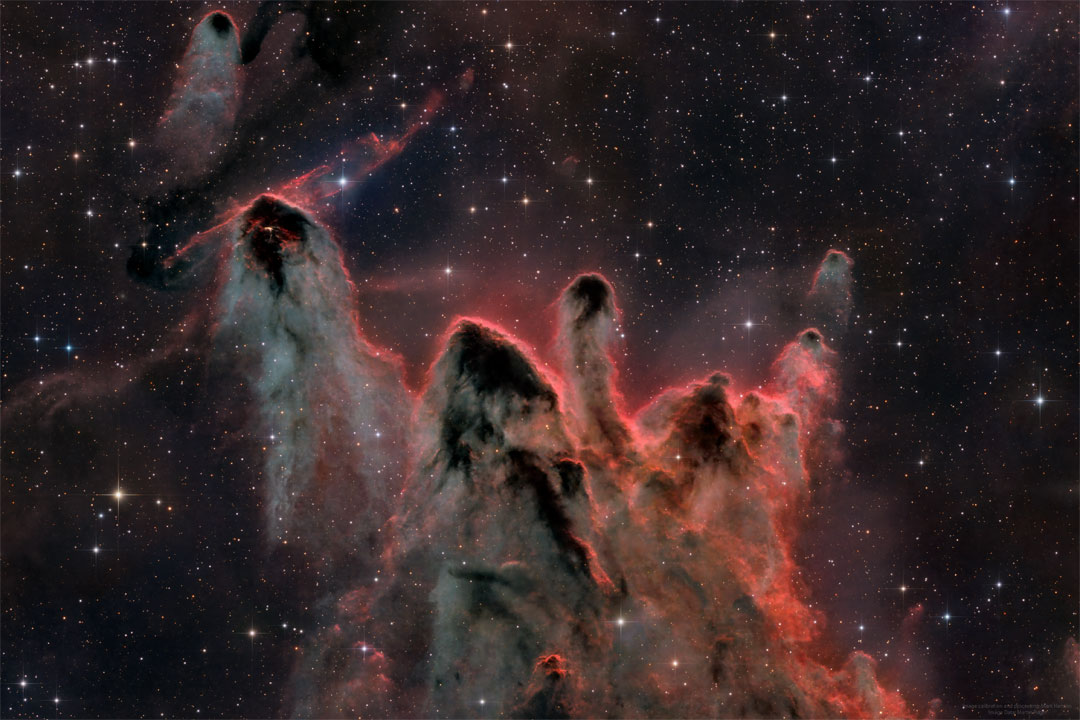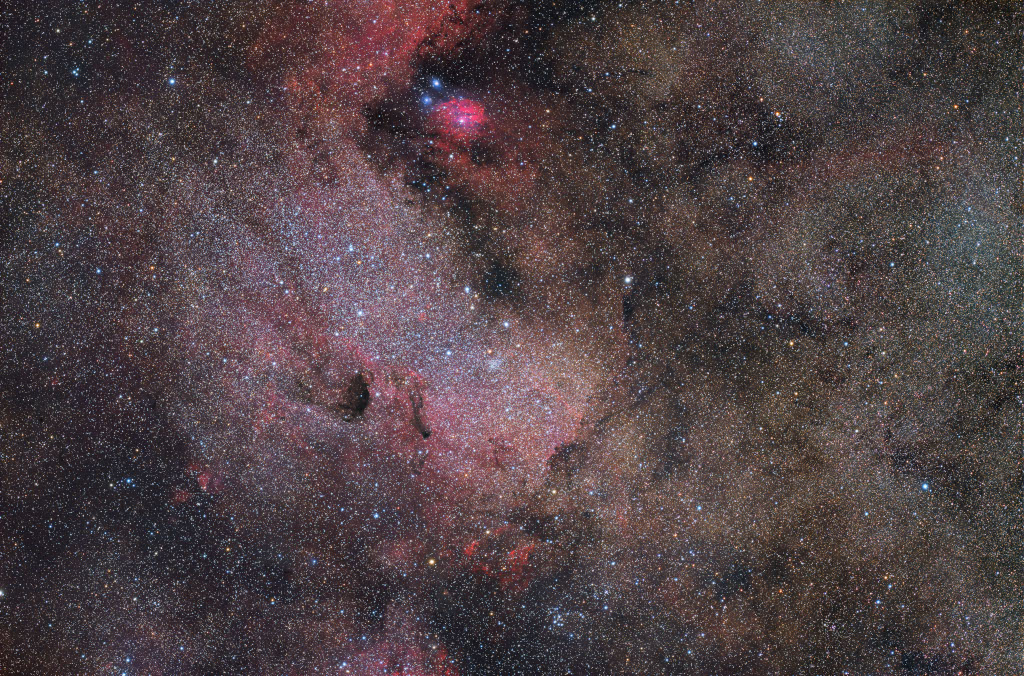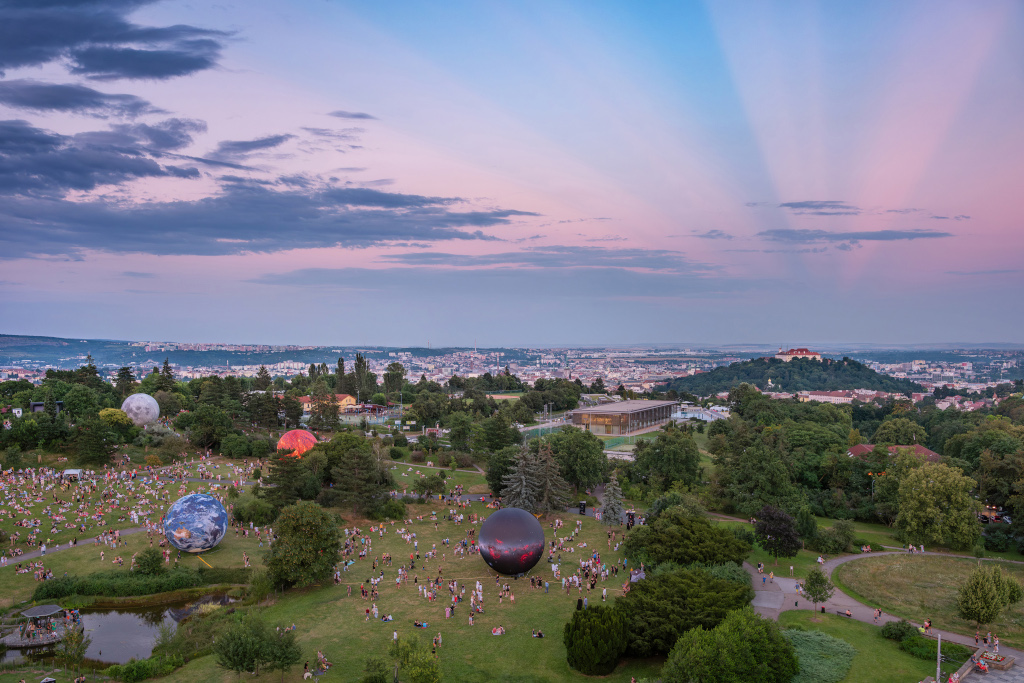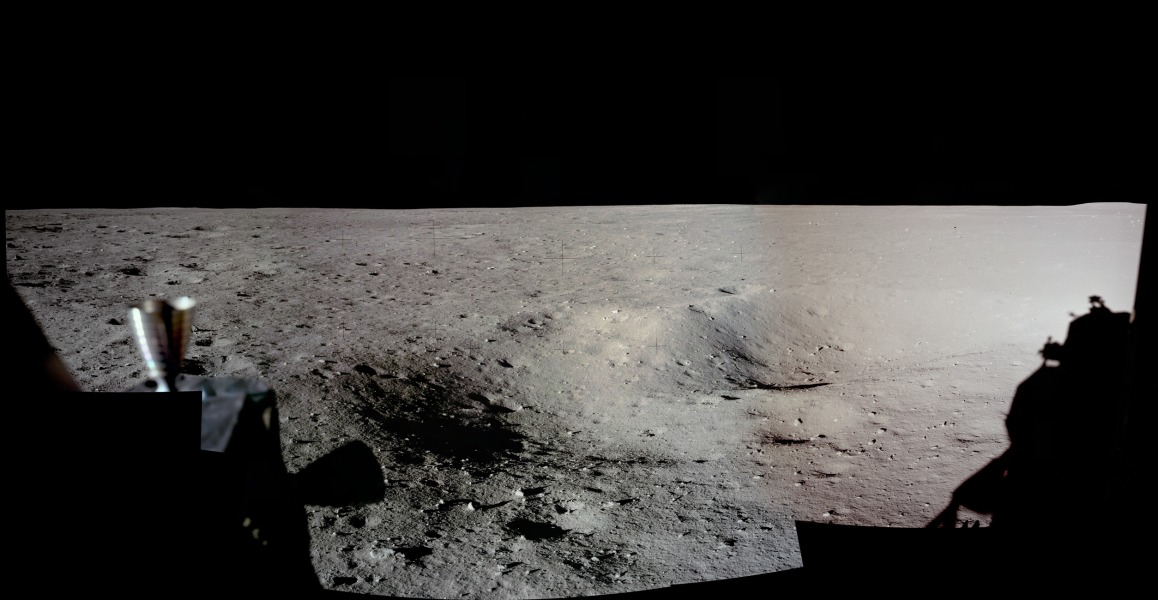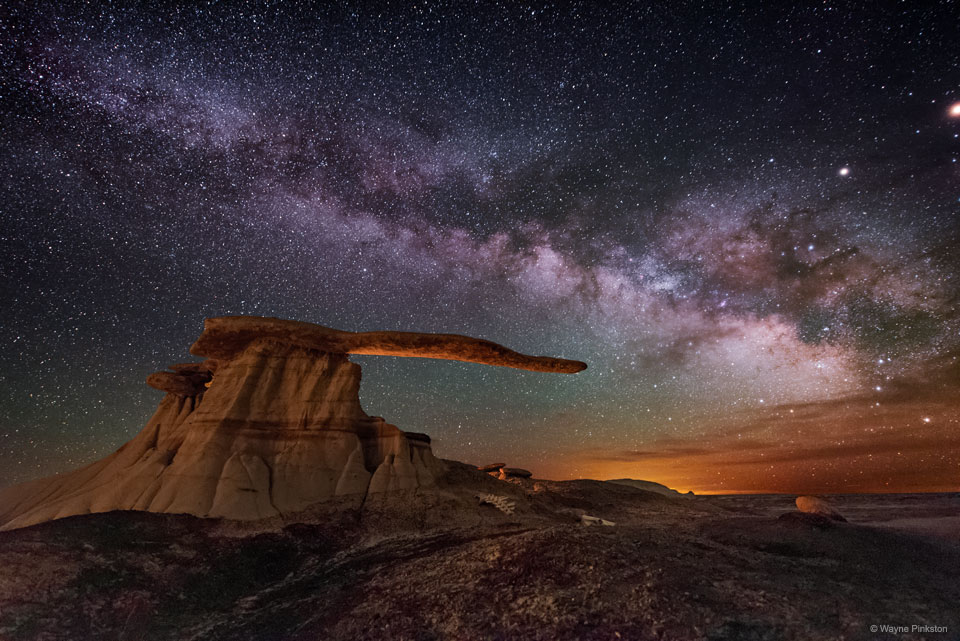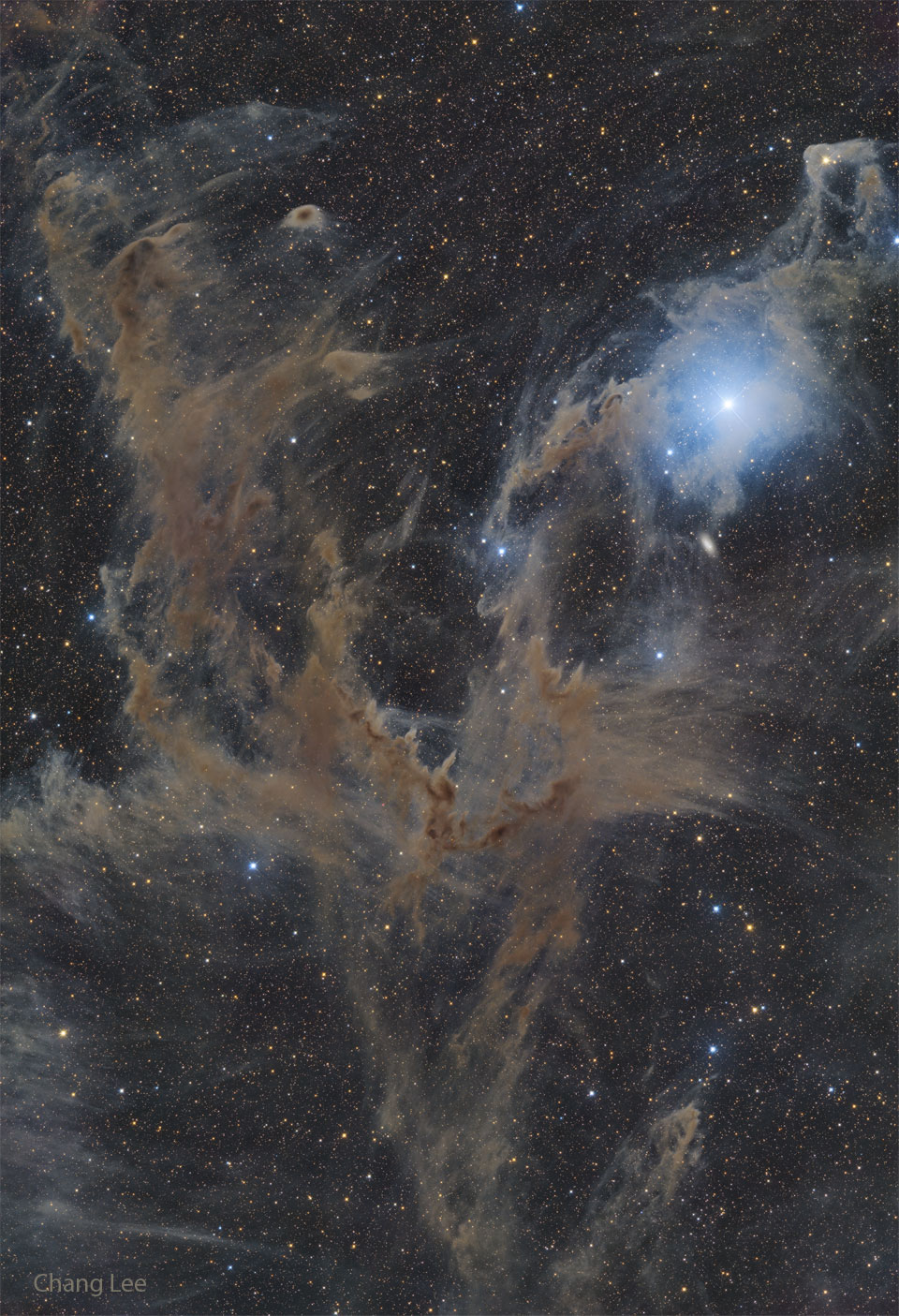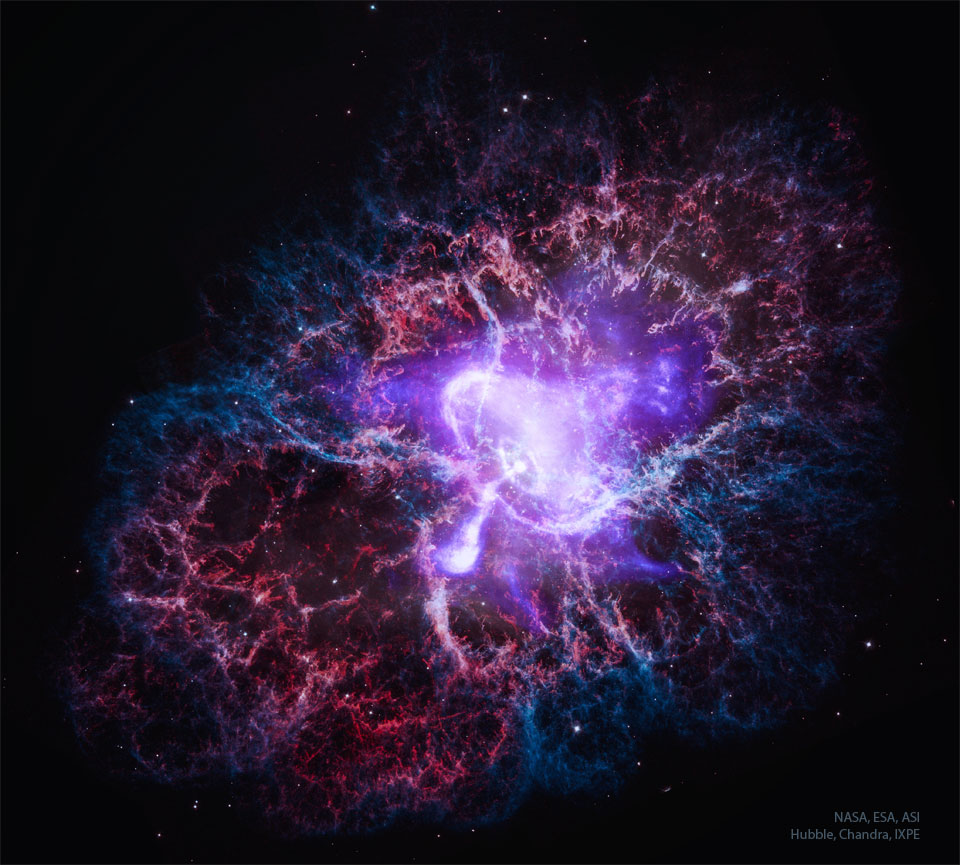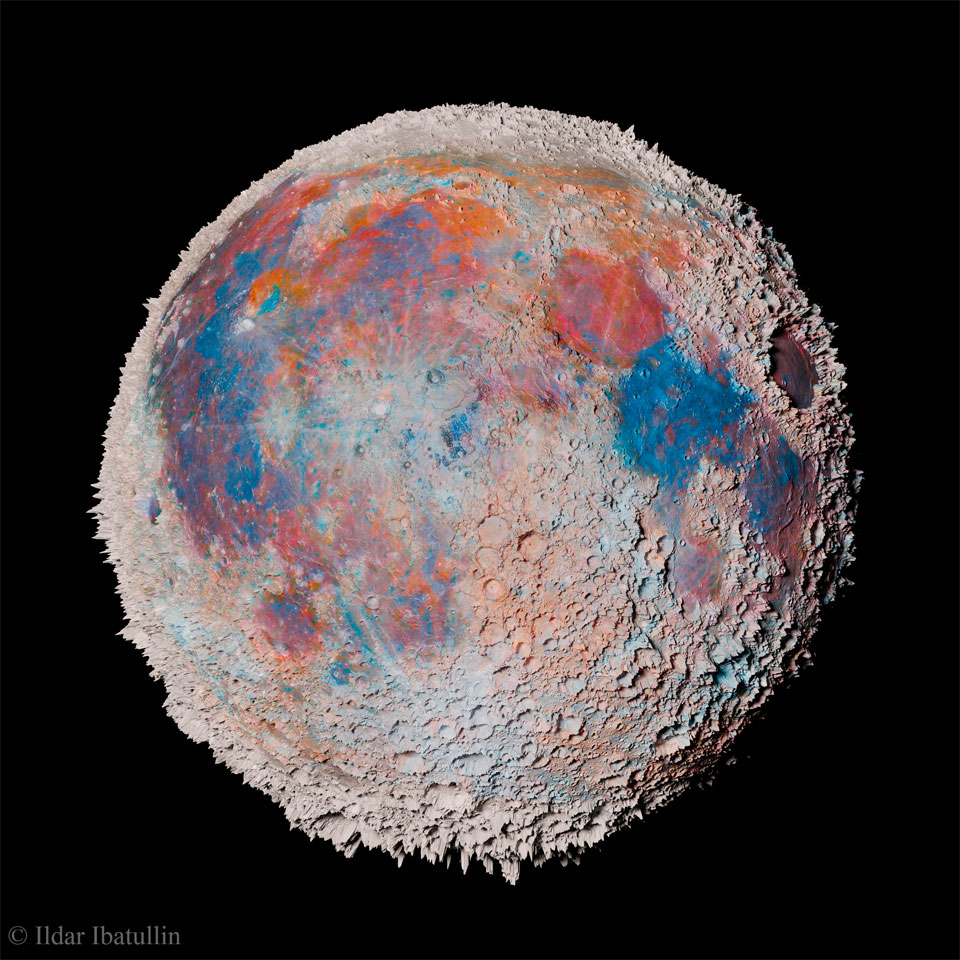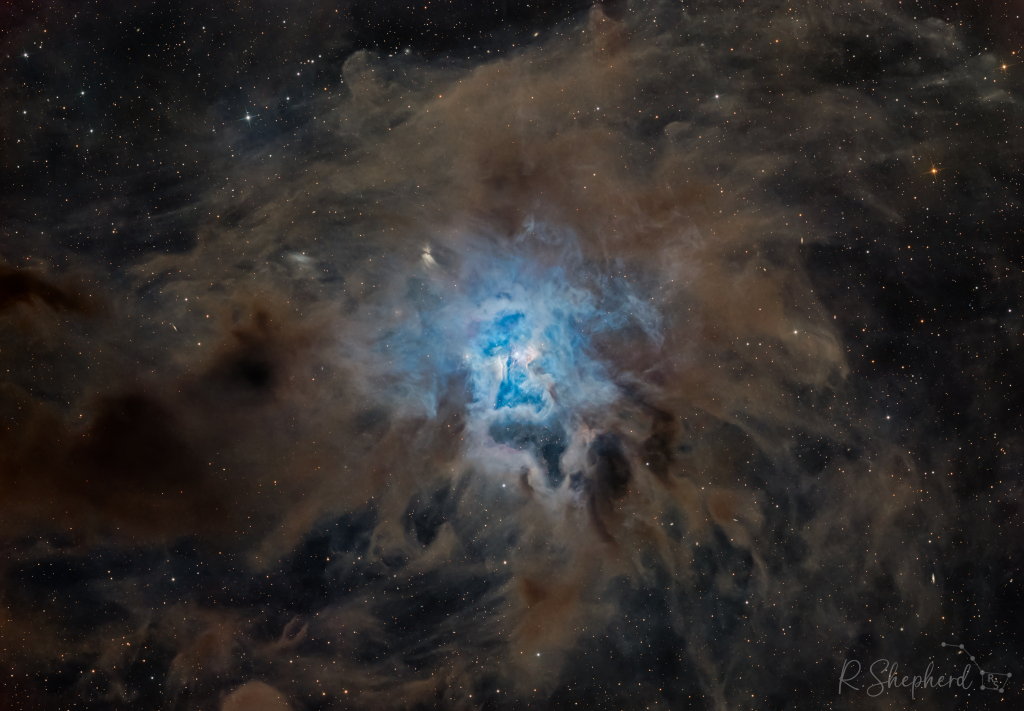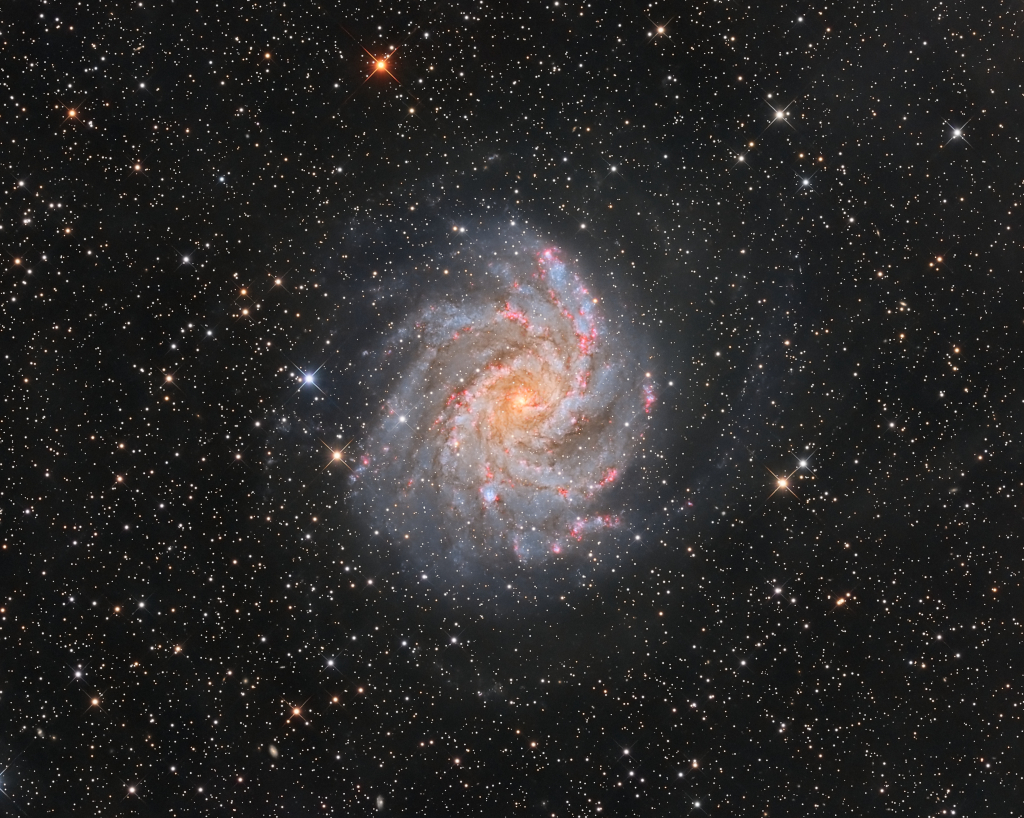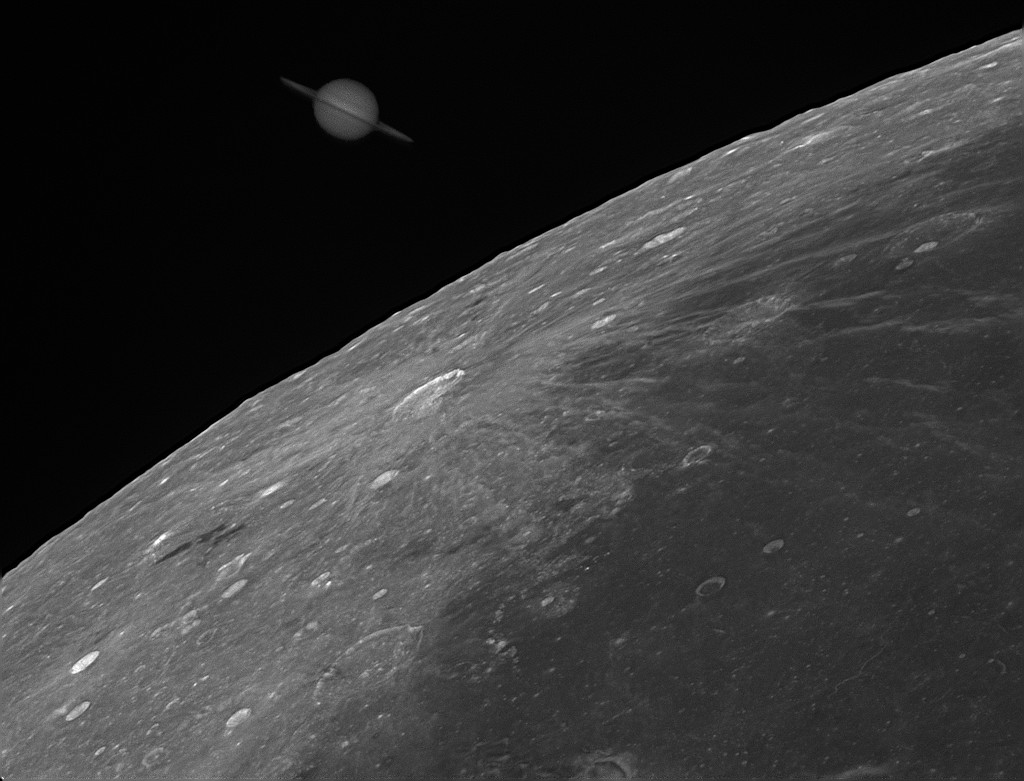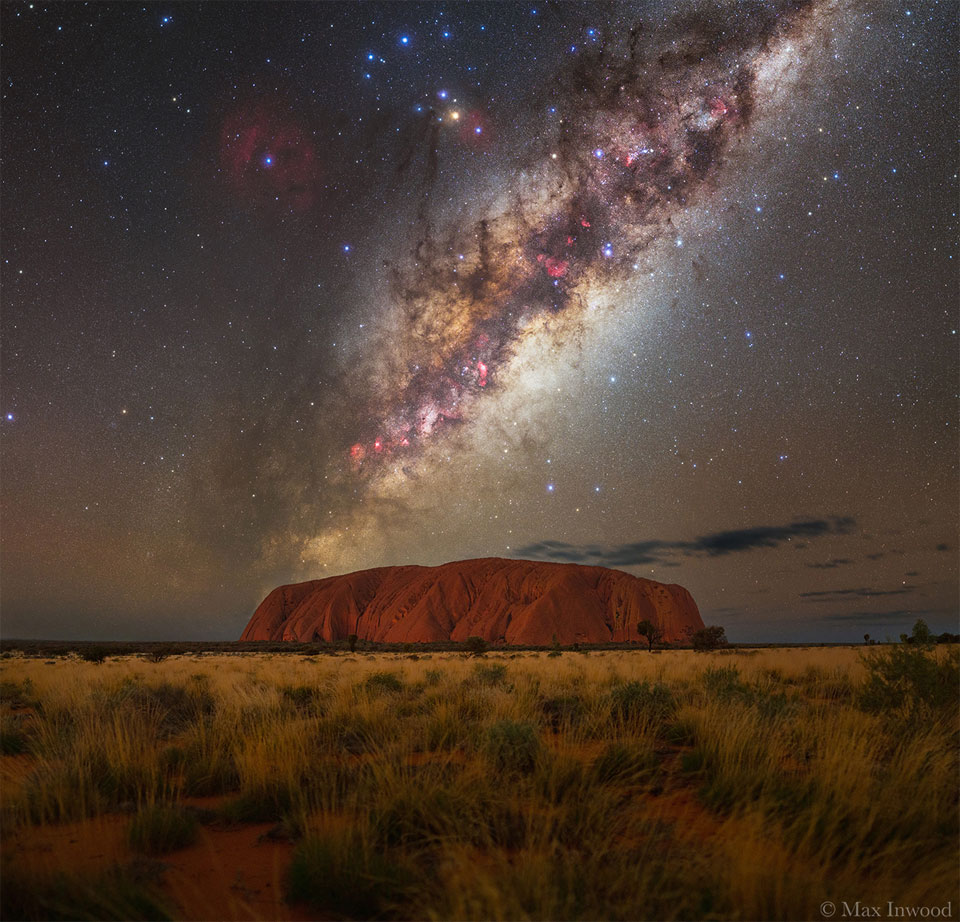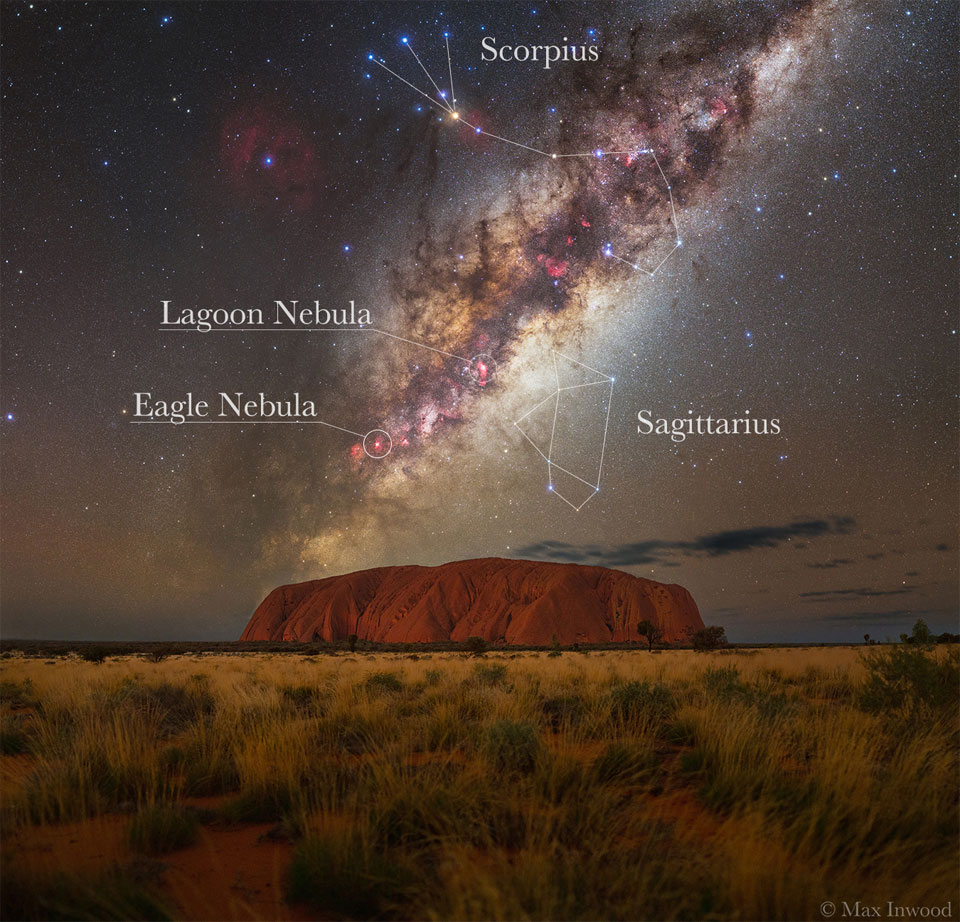| Title: Astronomy Picture of the Day | |
| friendsoffortiesfive > General > General Discussion | Go to subcategory: |
| Author | Content |
|
Niceguy2
|
|
|
Date Posted:03/06/2014 11:29 PMCopy HTML I really love this site and |
|
|
Niceguy2
|
#5601 |
|
Re:Astronomy Picture of the Day Date Posted:07/09/2024 2:07 AMCopy HTML Illustration Credit & Copyright: Martin Vargic, Halcyon Maps Explanation: Do other stars have planets like our Sun? Surely they do, and evidence includes slight star wobbles created by the gravity of orbiting exoplanets and slight star dimmings caused by orbiting planets moving in front. In all, there have now been over 5,500 exoplanets discovered, including thousands by NASA's space-based Kepler and TESS missions, and over 100 by ESO's ground-based HARPS instrument. Featured here is an illustrated guess as to what some of these exoplanets might look like. Neptune-type planets occupy the middle and are colored blue because of blue-scattering atmospheric methane they might contain. On the sides of the illustration, Jupiter-type planets are shown, colored tan and red from the scatterings of atmospheric gases that likely include small amounts of carbon. Interspersed are many Earth-type rocky planets of many colors. As more exoplanets are discovered and investigated, humanity is developing a better understanding of how common Earth-like planets are, and how common life might be in the universe. |
|
|
Niceguy2
|
#5602 |
|
Re:Astronomy Picture of the Day Date Posted:07/10/2024 2:26 AMCopy HTML Credit & Copyright: Pascal Fouquet Explanation: These clouds are doubly unusual. First, they are rare noctilucent clouds, meaning that they are visible at night -- but only just before sunrise or just after sunset. Second, the source of these noctilucent clouds is actually known. In this rare case, the source of the sunlight-reflecting ice-crystals in the upper atmosphere can be traced back to the launch of a nearby SpaceX rocket about 30 minutes earlier. Known more formally as polar mesospheric clouds, the vertex of these icy wisps happens to converge just in front of a rising crescent Moon. The featured image -- and accompanying video -- were captured over Orlando, Florida, USA about a week ago. The bright spot to the right of the Moon is the planet Jupiter, while the dotted lights above the horizon on the right are from an airplane. |
|
|
Niceguy2
|
#5603 |
|
Re:Astronomy Picture of the Day Date Posted:07/10/2024 2:27 AMCopy HTML
|
|
|
Niceguy2
|
#5604 |
|
Re:Astronomy Picture of the Day Date Posted:07/11/2024 2:45 AMCopy HTML Image Credit & Copyright: Andy Ermolli Explanation: These three bright nebulae are often featured on telescopic tours of the constellation Sagittarius and the crowded starfields of the central Milky Way. In fact, 18th century cosmic tourist Charles Messier cataloged two of them; M8, the large nebula above center, and colorful M20 below and left in the frame. The third emission region includes NGC 6559, right of M8 and separated from the larger nebula by a dark dust lane. All three are stellar nurseries about five thousand light-years or so distant. Over a hundred light-years across the expansive M8 is also known as the Lagoon Nebula. M20's popular moniker is the Trifid. Glowing hydrogen gas creates the dominant red color of the emission nebulae. But for striking contrast, blue hues in the Trifid are due to dust reflected starlight. The broad interstellar skyscape spans almost 4 degrees or 8 full moons on the sky. |
|
|
Niceguy2
|
#5605 |
|
Re:Astronomy Picture of the Day Date Posted:07/12/2024 2:10 AMCopy HTML Image Credit & Copyright: Juergen Stein Explanation: Globular star cluster Omega Centauri packs about 10 million stars much older than the Sun into a volume some 150 light-years in diameter. Also known as NGC 5139, at a distance of 15,000 light-years it's the largest and brightest of 200 or so known globular clusters that roam the halo of our Milky Way galaxy. Though most star clusters consist of stars with the same age and composition, the enigmatic Omega Cen exhibits the presence of different stellar populations with a spread of ages and chemical abundances. In fact, Omega Cen may be the remnant core of a small galaxy merging with the Milky Way. With a yellowish hue, Omega Centauri's red giant stars are easy to pick out in this sharp telescopic view. A two-decade-long exploration of the dense star cluster with the Hubble Space Telescope has revealed evidence for a massive black hole near the center of Omega Centauri. |
|
|
Niceguy2
|
#5606 |
|
Re:Astronomy Picture of the Day Date Posted:07/13/2024 2:27 AMCopy HTML Image Credit & Copyright: Team OURANOS, (Jean-Baptiste Auroux, Jean Claude Mario, Mathieu Guinot & Matthieu Tequi) Explanation: Planetary nebula Jones-Emberson 1 is the death shroud of a dying Sun-like star. It lies some 1,600 light-years from Earth toward the sharp-eyed constellation Lynx. About 4 light-years across, the expanding remnant of the dying star's atmosphere was shrugged off into interstellar space, as the star's central supply of hydrogen and then helium for fusion was depleted after billions of years. Visible near the center of the planetary nebula is what remains of the stellar core, a blue-hot white dwarf star. Also known as PK 164 +31.1, the nebula is faint and very difficult to glimpse at a telescope's eyepiece. But this deep image combining over 12 hours of exposure time does show it off in exceptional detail. Stars within our own Milky Way galaxy as well as background galaxies across the universe are scattered through the clear field of view. Ephemeral on the cosmic stage, Jones-Emberson 1 will fade away over the next few thousand years. Its hot, central white dwarf star will take billions of years to cool. |
|
|
Niceguy2
|
#5607 |
|
Re:Astronomy Picture of the Day Date Posted:07/14/2024 3:06 AMCopy HTML Image Credit: Voyager Project, NASA Explanation: In 1990, cruising four billion miles from the Sun, the Voyager 1 spacecraft looked back to make this first ever Solar System family portrait. The complete portrait is a 60 frame mosaic made from a vantage point 32 degrees above the ecliptic plane. In it, Voyager's wide-angle camera frames sweep through the inner Solar System at the left, linking up with ice giant Neptune, the Solar System's outermost planet, at the far right. Positions for Venus, Earth, Jupiter, Saturn, Uranus, and Neptune are indicated by letters, while the Sun is the bright spot near the center of the circle of frames. The inset frames for each of the planets are from Voyager's narrow-field camera. Unseen in the portrait are Mercury, too close to the Sun to be detected, and Mars, unfortunately hidden by sunlight scattered in the camera's optical system. Closer to the Sun than Neptune at the time, small, faint Pluto's position was not covered. In 2024 Voyager 1, NASA’s longest-running and most-distant spacecraft, is some 15 billion miles away, operating in interstellar space. |
|
|
Niceguy2
|
#5608 |
|
Re:Astronomy Picture of the Day Date Posted:07/15/2024 2:44 AMCopy HTML Credit & Copyright: Aman Chokshi Explanation: The galaxy was never in danger. For one thing, the Triangulum galaxy (M33), pictured, is much bigger than the tiny grain of rock at the head of the meteor. For another, the galaxy is much farther away -- in this instance 3 million light years as opposed to only about 0.0003 light seconds. Even so, the meteor's path took it angularly below the galaxy. Also the wind high in Earth's atmosphere blew the meteor's glowing evaporative molecule train away from the galaxy, in angular projection. Still, the astrophotographer was quite lucky to capture both a meteor and a galaxy in a single exposure -- which was subsequently added to two other images of M33 to bring up the spiral galaxy's colors. At the end, the meteor was gone in a second, but the galaxy will last billions of years. |
|
|
Niceguy2
|
#5609 |
|
Re:Astronomy Picture of the Day Date Posted:07/16/2024 2:28 AMCopy HTML Image Credit: Hubble Legacy Archive, ESA, NASA; Processing: Harshwardhan Pathak Explanation: Why does this galaxy have such a long tail? In this stunning vista, based on image data from the Hubble Legacy Archive, distant galaxies form a dramatic backdrop for disrupted spiral galaxy Arp 188, the Tadpole Galaxy. The cosmic tadpole is a mere 420 million light-years distant toward the northern constellation of the Dragon (Draco). Its eye-catching tail is about 280 thousand light-years long and features massive, bright blue star clusters. One story goes that a more compact intruder galaxy crossed in front of Arp 188 - from right to left in this view - and was slung around behind the Tadpole by their gravitational attraction. During the close encounter, tidal forces drew out the spiral galaxy's stars, gas, and dust forming the spectacular tail. The intruder galaxy itself, estimated to lie about 300 thousand light-years behind the Tadpole, can be seen through foreground spiral arms at the upper right. Following its terrestrial namesake, the Tadpole Galaxy will likely lose its tail as it grows older, the tail's star clusters forming smaller satellites of the large spiral galaxy. |
|
|
Niceguy2
|
#5610 |
|
Re:Astronomy Picture of the Day Date Posted:07/17/2024 2:57 AMCopy HTML Image Credit & Copyright: Mark Hanson & Martin Pugh, Observatorio El Sauce Explanation: What are these unusual interstellar structures? Bright-rimmed, flowing shapes gather near the center of this rich starfield toward the borders of the nautical southern constellations Pupis and Vela. Composed of interstellar gas and dust, the grouping of light-year sized cometary globules is about 1300 light-years distant. Energetic ultraviolet light from nearby hot stars has molded the globules and ionized their bright rims. The globules also stream away from the Vela supernova remnant which may have influenced their swept-back shapes. Within them, cores of cold gas and dust are likely collapsing to form low mass stars, whose formation will ultimately cause the globules to disperse. In fact, cometary globule CG 30 (on the upper left) sports a small reddish glow near its head, a telltale sign of energetic jets from a star in the early stages of formation. |
|
|
Niceguy2
|
#5611 |
|
Re:Astronomy Picture of the Day Date Posted:07/18/2024 2:06 AMCopy HTML 2024 July 17
Video Credit & Copyright: Gabriel Muñoz; Text: Natalia Lewandowska (SUNY Oswego) Explanation: When Vulcan, the Roman god of fire, swings his blacksmith's hammer, the sky is lit on fire. A recent eruption of Chile's Villarrica volcano shows the delicate interplay between this fire -- actually glowing steam and ash from melted rock -- and the light from distant stars in our Milky Way galaxy and the Magellanic Clouds galaxies. In the featured timelapse video, the Earth rotates under the stars as Villarrica erupts. With about 1350 volcanoes, our planet Earth rivals Jupiter's moon Io as the most geologically active place in the Solar System. While both have magnificent beauty, the reasons for the existence of volcanoes on both worlds are different. Earth's volcanoes typically occur between slowly shifting outer shell plates, while Io's volcanoes are caused by gravitational flexing resulting from Jupiter's tidal gravitational pull. |
|
|
Niceguy2
|
#5612 |
|
Re:Astronomy Picture of the Day Date Posted:07/19/2024 2:40 AMCopy HTML Image Credit & Copyright: Christopher Freeburn Explanation: Unlike most entries in Charles Messier's famous catalog of deep sky objects, M24 is not a bright galaxy, star cluster, or nebula. It's a gap in nearby, obscuring interstellar dust clouds that allows a view of the distant stars in the Sagittarius spiral arm of our Milky Way galaxy. Direct your gaze through this gap with binoculars or small telescope and you are looking through a window over 300 light-years wide at stars some 10,000 light-years or more from Earth. Sometimes called the Small Sagittarius Star Cloud, M24's luminous stars are left of center in this gorgeous starscape. Covering over 6 degrees or the width of 12 full moons in the constellation Sagittarius, the telescopic field of view includes dark markings B92 and B93 near the center of M24, along with other clouds of dust and glowing nebulae toward the center of the Milky Way. |
|
|
Niceguy2
|
#5613 |
|
Re:Astronomy Picture of the Day Date Posted:07/20/2024 1:18 AMCopy HTML Image Credit & Copyright: Pavel Gabzdyl Explanation: For some, these subtle bands of light and shadow stretched across the sky as the Sun set on July 11. Known as anticrepuscular rays, the bands are formed as a large cloud bank near the western horizon cast long shadows through the atmosphere at sunset. Due to the camera's perspective, the bands of light and shadow seem to converge toward the eastern (opposite) horizon at a point seen just above a 14th century hilltop castle in Brno, Czech Republic. In the foreground, denizens of planet Earth are enjoying the region's annual Planet Festival in the park below the Brno Observatory and Planetarium. And while crepuscular and anticrepuscular rays are a relatively common atmospheric phenomenon, this festival's 10 meter diameter inflatable spheres representing bodies of the Solar System are less often seen on planet Earth. |
|
|
Niceguy2
|
#5614 |
|
Re:Astronomy Picture of the Day Date Posted:07/20/2024 1:19 AMCopy HTML
|
|
|
Niceguy2
|
#5615 |
|
Re:Astronomy Picture of the Day Date Posted:07/21/2024 1:48 AMCopy HTML Image Credit: Neil Armstrong, Apollo 11, NASA Explanation: Have you seen a panorama from another world lately? Assembled from high-resolution scans of the original film frames, this one sweeps across the magnificent desolation of the Apollo 11 landing site on the Moon's Sea of Tranquility. The images were taken 55 years ago by Neil Armstrong looking out his window on the Eagle Lunar Module shortly after the July 20, 1969 landing. The frame at the far left (AS11-37-5449) is the first picture taken by a person on another world. Thruster nozzles can be seen in the foreground on the left (toward the south), while at the right (west), the shadow of the Eagle is visible. For scale, the large, shallow crater on the right has a diameter of about 12 meters. Frames taken from the Lunar Module windows about an hour and a half after landing, before walking on the lunar surface, were intended to document the landing site in case an early departure was necessary. |
|
|
Niceguy2
|
#5616 |
|
Re:Astronomy Picture of the Day Date Posted:07/22/2024 2:53 AMCopy HTML Image Credit & Copyright: Wayne Pinkston (LightCrafter Photography) Explanation: This rock structure is not only surreal -- it's real. Perhaps the reason it's not more famous is that it is smaller than one might guess: the capstone rock overhangs only a few meters. Even so, the King of Wings outcrop, located in New Mexico, USA, is a fascinating example of an unusual type of rock structure called a hoodoo. Hoodoos may form when a layer of hard rock overlays a layer of eroding softer rock. Figuring out the details of incorporating this hoodoo into a night-sky photoshoot took over a year. Besides waiting for a suitably picturesque night behind a sky with few clouds, the foreground had to be artificially lit just right relative to the natural glow of the background. After much planning and waiting, the final shot, featured here, was taken in May 2016. Mimicking the horizontal bar, the background sky features the band of our Milky Way Galaxy stretching overhead. |
|
|
Niceguy2
|
#5617 |
|
Re:Astronomy Picture of the Day Date Posted:07/23/2024 2:51 AMCopy HTML Image Credit & Copyright: Chang Lee Explanation: Sometimes the dark dust of interstellar space has an angular elegance. Such is the case toward the far-south constellation of Chamaeleon. Normally too faint to see, dark dust is best known for blocking visible light from stars and galaxies behind it. In this 36.6-hour exposure, however, the dust is seen mostly in light of its own, with its strong red and near-infrared colors creating a brown hue. Contrastingly blue, the bright star Beta Chamaeleontis is visible on the upper right, with the dust that surrounds it preferentially reflecting blue light from its primarily blue-white color. All of the pictured stars and dust occur in our own Milky Way Galaxy with one notable exception: the white spot just below Beta Chamaeleontis is the galaxy IC 3104 which lies far in the distance. Interstellar dust is mostly created in the cool atmospheres of giant stars and dispersed into space by stellar light, stellar winds, and stellar explosions such as supernovas. |
|
|
Niceguy2
|
#5618 |
|
Re:Astronomy Picture of the Day Date Posted:07/24/2024 1:26 AMCopy HTML Image Credit: NASA, ESA, ASI, Hubble, Chandra, IXPE Explanation: What powers the Crab Nebula? A city-sized magnetized neutron star spinning around 30 times a second. Known as the Crab Pulsar, it is the bright spot in the center of the gaseous swirl at the nebula's core. About 10 light-years across, the spectacular picture of the Crab Nebula (M1) frames a swirling central disk and complex filaments of surrounding and expanding glowing gas. The picture combines visible light from the Hubble Space Telescope in red and blue with X-ray light from the Chandra X-ray Observatory shown in white, and diffuse X-ray emission detected by Imaging X-ray Polarimetry Explorer (IXPE) in diffuse purple. The central pulsar powers the Crab Nebula's emission and expansion by slightly slowing its spin rate, which drives out a wind of energetic electrons. The featured image released today, the 25th Anniversary of the launch of NASA's flagship-class X-ray Observatory: Chandra. |
|
|
Niceguy2
|
#5619 |
|
Re:Astronomy Picture of the Day Date Posted:07/25/2024 2:40 AMCopy HTML Credit: Data: NASA, Lunar Orbiter Laser Altimeter; Image & Processing: Ildar Ibatullin Explanation: Our Moon doesn't really have craters this big. Earth's Moon, Luna, also doesn't naturally show this spikey texture, and its colors are more subtle. But this digital creation is based on reality. The featured image is a digital composite of a good Moon image and surface height data taken from NASA's Lunar Orbiter Laser Altimeter (LOLA) mission -- and then exaggerated for educational understanding. The digital enhancements, for example, accentuate lunar highlands and show more clearly craters that illustrate the tremendous bombardment our Moon has been through during its 4.6-billion-year history. The dark areas, called maria, have fewer craters and were once seas of molten lava. Additionally, the image colors, although based on the moon's real composition, are changed and exaggerated. Here, a blue hue indicates a region that is iron rich, while orange indicates a slight excess of aluminum. Although the Moon has shown the same side to the Earth for billions of years, modern technology is allowing humanity to learn much more about it -- and how it affects the Earth. |
|
|
Niceguy2
|
#5620 |
|
Re:Astronomy Picture of the Day Date Posted:07/26/2024 2:14 AMCopy HTML Image Credit & Copyright: Robert Shepherd Explanation: These cosmic clouds have blossomed 1,300 light-years away in the fertile starfields of the constellation Cepheus. Called the Iris Nebula, NGC 7023 is not the only nebula to evoke the imagery of flowers. Still, this deep telescopic image shows off the Iris Nebula's range of colors and symmetries embedded in surrounding fields of interstellar dust. Within the Iris itself, dusty nebular material surrounds a hot, young star. The dominant color of the brighter reflection nebula is blue, characteristic of dust grains reflecting starlight. Central filaments of the reflection nebula glow with a faint reddish photoluminescence as some dust grains effectively convert the star's invisible ultraviolet radiation to visible red light. Infrared observations indicate that this nebula contains complex carbon molecules known as PAHs. The dusty blue petals of the Iris Nebula span about six light-years. |
|
|
Niceguy2
|
#5621 |
|
Re:Astronomy Picture of the Day Date Posted:07/27/2024 2:48 AMCopy HTML Image Credit & Copyright: Roberto Marinoni Explanation: From our vantage point in the Milky Way Galaxy, we see NGC 6946 face-on. The big, beautiful spiral galaxy is located just 20 million light-years away, behind a veil of foreground dust and stars in the high and far-off constellation Cepheus. In this sharp telescopic portrait, from the core outward the galaxy's colors change from the yellowish light of old stars in the center to young blue star clusters and reddish star forming regions along the loose, fragmented spiral arms. NGC 6946 is also bright in infrared light and rich in gas and dust, exhibiting a high star birth and death rate. In fact, since the early 20th century ten confirmed supernovae, the death explosions of massive stars, were discovered in NGC 6946. Nearly 40,000 light-years across, NGC 6946 is also known as the Fireworks Galaxy. |
|
|
Niceguy2
|
#5622 |
|
Re:Astronomy Picture of the Day Date Posted:07/28/2024 2:21 AMCopy HTML Image Credit & Copyright: Chengcheng Xu Explanation: Saturn now rises before midnight in planet Earth's sky. On July 24, the naked-eye planet was in close conjunction, close on the sky, to a waning gibbous Moon. But from some locations on planet Earth the ringed gas giant was occulted, disappearing behind the Moon for about an hour from skies over parts of Asia and Africa. Because the Moon and bright planets wander through the sky near the ecliptic plane, such occultation events are not uncommon, but they can be dramatic. In this telescopic view from Nanjing, Jiangsu, China, Saturn is caught moments before its disappearance behind the lunar disk. The snapshot gives the illusion that Saturn hangs just above Glushko crater, a 43 kilometer diameter, young, ray crater near the Moon's western edge. Of course, the Moon is 400 thousand kilometers away, compared to Saturn's distance of 1.4 billion kilometers. |
|
|
Niceguy2
|
#5623 |
|
Re:Astronomy Picture of the Day Date Posted:07/29/2024 2:44 AMCopy HTML 2024 July 28
Video Credit: NASA, SDO; Processing: Alan Watson via Helioviewer Explanation: Sometimes, the surface of our Sun seems to dance. In the middle of 2012, for example, NASA's Sun-orbiting Solar Dynamic Observatory spacecraft imaged an impressive prominence that seemed to perform a running dive roll like an acrobatic dancer. The dramatic explosion was captured in ultraviolet light in the featured time-lapse video covering about three hours. A looping magnetic field directed the flow of hot plasma on the Sun. The scale of the dancing prominence is huge -- the entire Earth would easily fit under the flowing arch of hot gas. A quiescent prominence typically lasts about a month and may erupt in a Coronal Mass Ejection (CME), expelling hot gas into the Solar System. The energy mechanism that creates a solar prominence is still a topic of research. Like in 2012, this year the Sun's surface is again quite active and features many filaments and prominences. |
|
|
Niceguy2
|
#5624 |
|
Re:Astronomy Picture of the Day Date Posted:07/30/2024 2:36 AMCopy HTML Image Credit & Copyright: Max Inwood Explanation: What's happening above Uluru? A United Nations World Heritage Site, Uluru is an extraordinary 350-meter high mountain in central Australia that rises sharply from nearly flat surroundings. Composed of sandstone, Uluru has slowly formed over the past 300 million years as softer rock eroded away. The Uluru region has been a home to humans for over 22,000 years. Recorded last month, the starry sky above Uluru includes the central band of our Milky Way galaxy, complete with complex dark filaments of dust, bright red emission nebulas, and billions of stars. |
|
|
Niceguy2
|
#5625 |
|
Re:Astronomy Picture of the Day Date Posted:07/30/2024 2:37 AMCopy HTML
|







